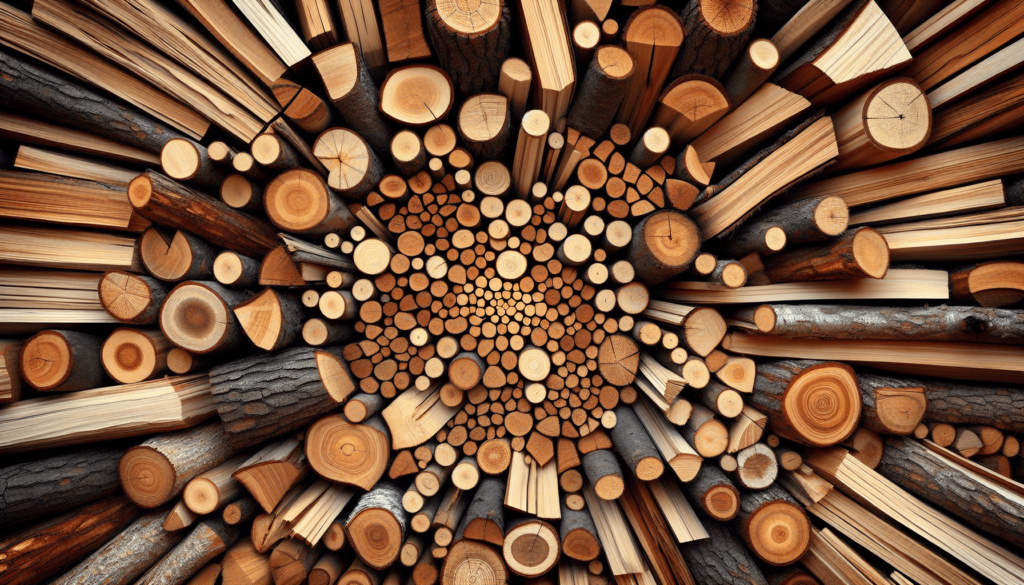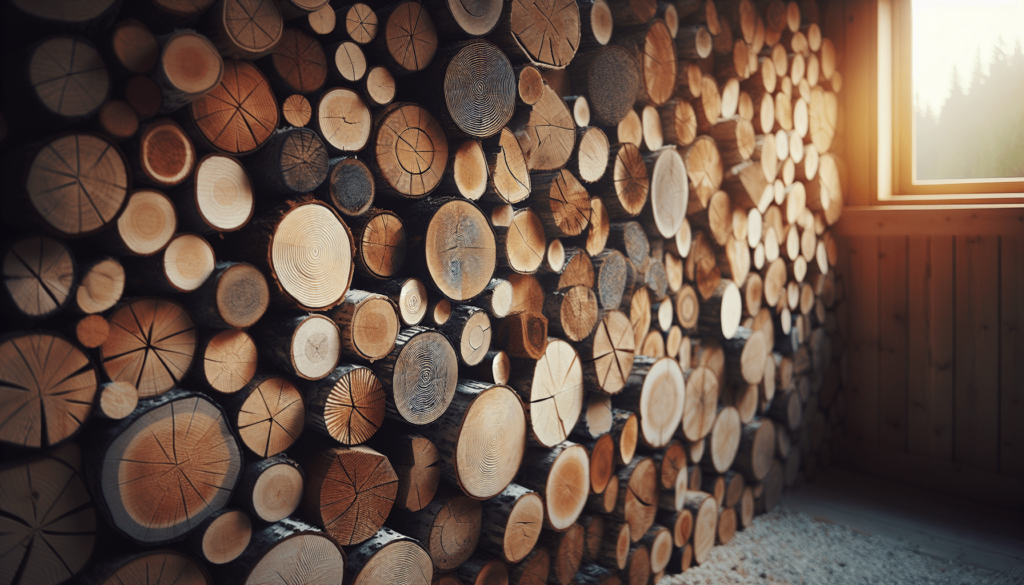Which woods are best for burning? It’s a question that might pop into your head while you’re staring at that fireplace in utter confusion, wondering why yesterday’s logs turned into a smoky mess. Speaking from experience, not all firewood is created equal. Let’s dive into the details of what makes one type of wood better for burning than another.

Understanding the Basics of Firewood
Before I get into the specific types of wood, it’s important to understand the factors that make a wood good for burning. Firewood, in its essence, is just another form of stored solar energy. Over the years, I’ve learned there’s more to choosing firewood than just picking up whatever I can find on my neighbor’s lawn after a storm.
What is Seasoned Wood?
Seasoning refers to the process of drying out wood so that it will burn more efficiently. Freshly cut wood, also known as green wood, contains a lot of moisture. If you’ve ever tried to burn a piece of green wood, you know it’s like trying to start a campfire with a wet blanket: frustrating and ultimately wasted effort.
To season wood, you need to store it in a dry, well-ventilated area for at least six months to a year. Ideally, you should aim for wood that has a moisture content of less than 20%. Investing in a moisture meter was one of the best decisions I ever made in my pursuit of the perfect firewood.
Softwoods vs. Hardwoods
You might have heard the terms “softwood” and “hardwood” thrown around. They sound like they might describe the texture of the wood, but they’re actually classified based on the tree species.
Softwoods come from coniferous trees like pine, spruce, and fir. These trees tend to grow faster and have needles rather than leaves. While they ignite easily and burn quickly, I’ve found that they usually don’t produce as much heat and leave behind more residue.
Hardwoods originate from deciduous trees like oak, maple, and hickory. These trees shed their leaves annually, grow slower, and tend to be denser. Hardwoods burn longer and hotter, making them the preferred choice for a steady, warm fire.
Best Hardwoods for Burning
If there’s one thing to remember, it’s that not all hardwoods are created equal. Some hardwoods outshine others, making them the all-stars of the firewood world. Below are some of the best hardwoods for burning.
Oak
Oak is the king of firewood. Whenever someone asks me what type of wood they should stock up on, oak is the first word out of my mouth. Red oak, white oak, it doesn’t matter—they all burn long and hot.
Pros:
- High Heat Output: You’ll get a long-lasting fire with intense heat.
- Low Smoke: Burns clean with minimal smoke.
- Long Burn Time: Once it gets going, you’re in for a long, warm night.
Cons:
- Hard to Ignite: Needs good kindling and a bit of time to start.
Hickory
If oak is the king, hickory is the queen. It offers almost all the benefits of oak but adds a unique aroma that is just unbeatable.
Pros:
- Excellent Heat Output: Comparable to oak in terms of heat.
- Aromatic: Creates a pleasant smell that adds to the ambiance.
- Long Burn Time: Burns hot and long, keeping you warm through the night.
Cons:
- Expensive: Usually costs more than other options.
- Heavy: Harder to handle and transport.
Maple
Sugar maple, red maple, or any other kind, maple wood is another fantastic choice for your fireplace or wood stove.
Pros:
- Good Heat: Burns hot but not as hot as oak or hickory.
- Low Smoke: Produces minimal smoke.
- Moderate Burn Time: Burns longer than softwoods but shorter than oak.
Cons:
- Moderate Availability: Depending on where you live, it might be harder to find.
Birch
Birch wood is quite popular in areas where other hardwoods might be scarce. It’s easy to split, making it a go-to for people who like to prep their own firewood.
Pros:
- High Heat: Burns hotter than many other hardwoods.
- Easy to Split: If you enjoy the process of splitting wood, birch makes the experience enjoyable.
- Low Smoke: Burns cleanly with minimal smoke.
Cons:
- Quick Burn: Burns faster than oak or hickory, so you’ll need to use more wood.
Best Softwoods for Burning
Though hardwoods are often the go-to for wood burning, softwoods have their own set of advantages, especially for kindling or quick, hot fires.
Pine
Pine wood has a bad rep, but it does have its moments. I particularly like to use it for kindling because it ignites quickly.
Pros:
- Easy to Ignite: Starts burning quickly.
- Readily Available: Pines are widespread and easy to find.
- Aromatic: Adds a pleasant scent to your home.
Cons:
- High Resin Content: Can lead to a build-up of creosote in your chimney.
- Burns Fast: You’ll go through your supply quickly.
Spruce
Spruce is another softwood that comes with its own set of pros and cons. While it’s not the best for long-lasting heat, it’s straightforward to use for getting a fire started.
Pros:
- Fast Ignition: Lights up quickly, making it excellent for kindling.
- Lightweight: Easy to handle and transport.
- Clean Burner: Doesn’t produce much smoke.
Cons:
- Low Heat Output: Doesn’t get as hot as hardwoods.
- Quick Burn: Needs frequent replenishment.
Fir
Douglas fir is one of the more popular types of softwood for burning. It offers a middle ground for those who might want the benefits of both hardwoods and softwoods.
Pros:
- Moderate Heat: Burns hotter than other softwoods but not as hot as hardwoods.
- Easy to Split: Simple to prepare.
- Low Resin: Lower risk of creosote build-up.
Cons:
- Moderate Burn Time: Doesn’t last as long as oak or hickory.
- Moderate Smoke: Produces a bit more smoke than hardwoods.
Factors Influencing Firewood Quality
When I was starting my firewood collection, I didn’t realize how much the quality of wood could vary even within the same species. Several factors can affect how well wood burns.
Moisture Content
Probably the most critical factor is moisture content. As I mentioned before, wood should be seasoned for at least six months to reduce its moisture content to below 20%.
| Log | Ideal Moisture Content |
|---|---|
| Oak | <20%< />d> |
| Hickory | <20%< />d> |
| Maple | <20%< />d> |
| Pine | <20%< />d> |
| Spruce | <15%< />d> |
Storage Conditions
Where you store your wood can significantly impact its quality. I once left a stack of wood out in the open, thinking it would season just fine. It didn’t—it rotted. Always store your firewood in a dry, well-ventilated area to ensure it dries out properly.
Size and Shape
The size and shape of your wood pieces can also influence how well they burn. Larger logs burn slower and more efficiently than smaller pieces. However, small pieces, especially kindling, are essential for getting your fire started.

Storing Your Firewood
Storing firewood seems straightforward, but there’s more to it than just piling logs in a corner. Proper storage ensures that your wood will burn efficiently when you need it.
Splitting and Stacking
Splitting your wood exposes more surface area, which helps it season faster. I remember being frustrated with large logs that only seemed to dry on the outside while remaining damp inside. Splitting them solved the issue.
Splitting Tips:
- Safety First: Wear safety goggles and gloves.
- Use a Sharp Axe: A dull axe makes the job harder and more dangerous.
- Split Log Quarters: Aim to split your logs into quartered pieces for faster seasoning.
Arranging the Stack
I’ve come to appreciate the art of stacking wood—yes, it can be an art. The best method is to stack your wood in a crisscross pattern or use a rack to keep it off the ground. This ensures airflow around the logs, speeding up the seasoning process.
Stacking Tips:
- Elevate: Keep the bottom row off the ground using pallets or a rack.
- Cover: Use a tarp to cover the top of your stack, leaving the sides open for airflow.
- Ventilate: Space out rows to allow air circulation.
Safety Tips for Burning Wood
Using wood for heating or ambiance can be incredibly rewarding, but it’s crucial to do it safely. Here are some key safety tips that have helped me avoid any mishaps along the way.
Chimney Maintenance
Chimney fires can be a nightmare. They usually occur due to creosote build-up, which is more prevalent when burning resinous woods like pine.
Maintenance Tips:
- Annual Cleaning: Get your chimney inspected and cleaned at least once a year.
- Use a Chimney Cap: Prevents debris and animals from blocking the chimney.
- Install a Spark Arrestor: Reduces the risk of sparks flying out and causing a fire.
Fire Safety
It goes without saying, but I’ll say it anyway—always maintain a safe environment when burning wood.
Fire Safety Tips:
- Keep a Screen: Always use a fireplace screen to catch any flying sparks.
- Clear the Area: Ensure no flammable materials are near your fireplace or stove.
- Never Leave Unattended: Don’t leave a fire unattended, especially overnight or while you’re out of the house.
Sustainable Wood Burning
In today’s environmentally-conscious world, it’s essential to consider the sustainability of your wood-burning practices. It’s about more than just enjoying a cozy fire; it’s about ensuring that future generations can do the same.
Sustainable Harvesting
Knowing where your wood comes from can make a significant impact. Try to source your firewood from sustainable sources. This means the wood should come from managed forests where trees are replanted to replace those that are harvested.
Kiln-Dried vs. Air-Dried
I’ve found that kiln-dried wood often burns cleaner and more efficiently than air-dried wood. While it might be more expensive, the trade-off is worth it for the reduced emissions and better combustion.
Choice of Wood
Choosing the right type of wood can also contribute to sustainability. Fast-growing trees like poplar can be more sustainable, though they don’t offer the same burning quality as slower-growing hardwoods like oak and hickory.
Conclusion
So, which woods are best for burning? Well, it really comes down to your needs and preferences. If you’re looking for long-lasting, intense heat, hardwoods like oak and hickory are your best bet. If you need something that ignites quickly and serves as excellent kindling, softwoods like pine and spruce are the way to go. But always remember, the key to a good fire is well-seasoned wood.
I’ve spent years tinkering and experimenting with different types of wood, and if there’s one takeaway, it’s that a little knowledge goes a long way. So, the next time you find yourself scratching your head over which wood to use, think back to this guide and rest assured—you’re now armed with all the info you need to make the perfect choice for a cozy, warm fire.

